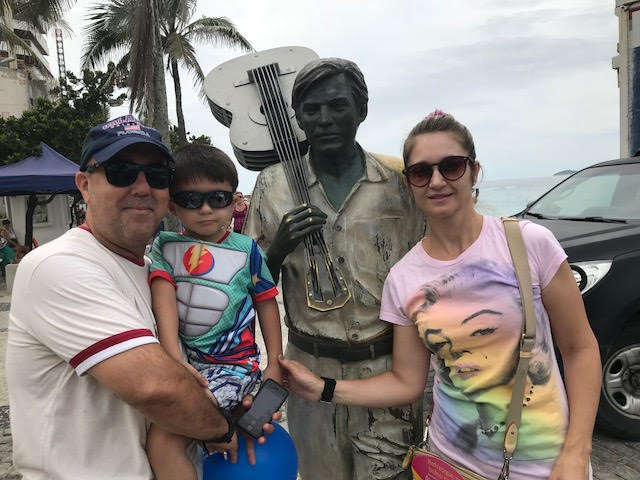|
While some Americans were preparing for the Super Bowl (see below) in icy Minneapolis on Sunday, the Silva family of Rio went to Ipanema. Altenir, Neo and Celia posed at the statue of Tom Jobim, who wrote "Garota de Ipanema." On the beach, hundreds of people are usually performing tricks, maneuvering a large round ball with their feet and chests and knees and foreheads. The soul of that sport is in Brazil. Senhoras e senhores, Antonio Carlos Jobim: If one is going to see only one American football game per season -- and I did -- this was the game to see.
Super Bowl LII was full of twists and athleticism and trick plays. The brain damage will be assessed in a few years. I've got some friends who are Iggles fans, and they had never won the Super Bowl. It isn't hard to root against the Patriots, except that Tom Brady is still admirable, on the field, after all these years. He had the ball in the closing seconds. Great game. Our daughter Laura made gumbo that warmed me up, maybe just as much as I might have been on the beach at Ipanema. Boa noite a todos.
Altenir Silva
2/4/2018 06:25:37 pm
Wow! Tom Jobim is our pride here in Brazil, like Lou Gehrig is to the Yankees. Always when we get into the Ipanema Beach (Rio de Janeiro) and see the statue of Mr. Jobim, we remember you, George. 2/4/2018 06:59:57 pm
Chilling out with Altenir and his family would be a great alternative to watching the super bowl (lower case intended).
Gene Palumbo
2/5/2018 12:17:47 am
Alan Rubin:
Ed Martin
2/5/2018 07:48:51 pm
Re: Antonios Carlos Jobim, aka Tom, our friend, the late U. Of Alabama Theater Director, Marian Galloway, PH.D, Iowa always referred to UI friend as “Tom” rather than Tennessee Williams. In case they thought she was name dropping, all they had to do was to see Blanche DuBois in “Streetcar.” Meanwhile Jobim made an album, circa 1990, of his compositions and one US piece, “You Do Something To Me... something that mystifies me....”. He sang it in English and we listened in the company of our newly born grandson, Alec, and we sang it to him many times. In a loosely asasociated note, Alec’s younger sister, Gwen, is in Liberia as a Peace Corps volunteer, teaching math and science in a village with no water system, phone, etc. She has a dog she adores called, “Neymar.”
George Vecsey
2/5/2018 10:05:29 pm
Dear Ed, good for your grand-daughter. Comments are closed.
|
Categories
All
|










